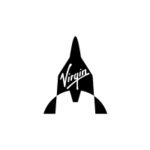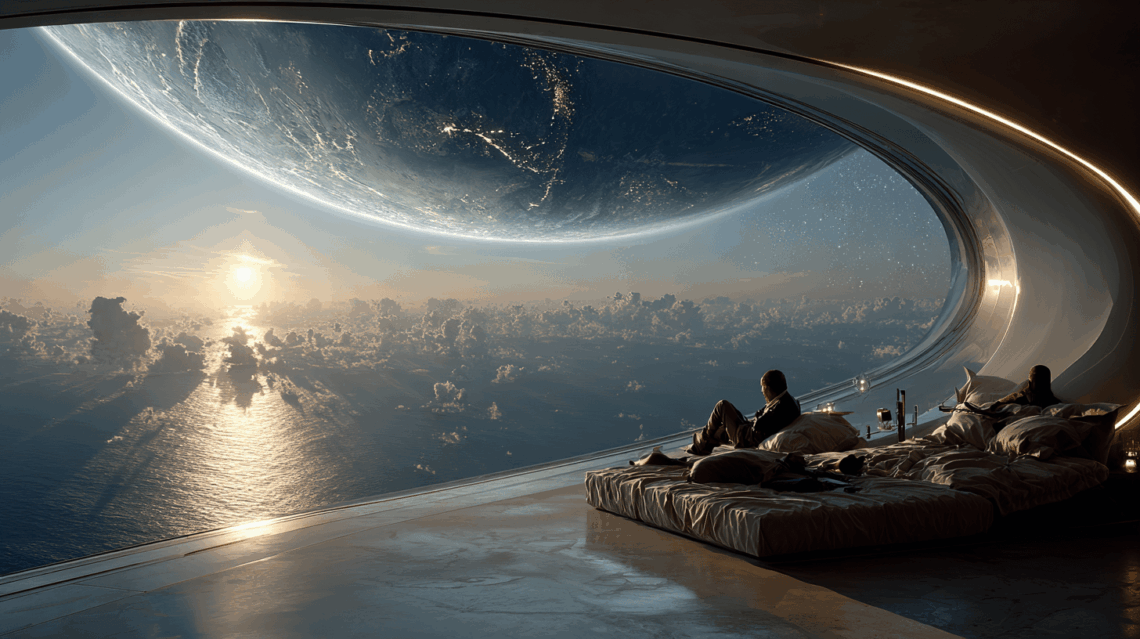
Virgin Galactic: Suborbital Flights with Style, Comfort, and Innovation
Virgin Galactic is one of the most recognized names in the commercial space tourism industry. Founded by Sir Richard Branson, the company offers suborbital spaceflights aboard a reusable spaceplane that is launched mid-air from a carrier aircraft. Its missions are designed to provide a high-end experience for civilians looking to venture beyond Earth’s atmosphere, even if just for a few minutes.
What makes Virgin Galactic unique is its spaceplane model. Unlike traditional rockets that launch vertically from the ground, Virgin’s spacecraft is first carried to a high altitude before its rocket engine is ignited. After reaching the edge of space, passengers experience several minutes of microgravity before the spaceplane glides back to Earth and lands on a runway, much like a conventional aircraft. This approach offers a smoother and arguably more comfortable spaceflight experience compared to vertical launches.
Virgin Galactic Flight Profile and Experience
Each Virgin Galactic spaceflight is an adventure that includes:
-
A horizontal takeoff aboard the WhiteKnightTwo mothership
-
Release of the spaceplane at approximately 45,000 feet
-
A rocket-powered ascent reaching altitudes around 85–90 km
-
3 to 5 minutes of weightlessness with panoramic views of Earth
-
A gliding descent and runway landing
The total flight lasts about 90 minutes, but the experience spans several days. Customers undergo multi-day pre-flight training, health evaluations, mission briefings, and team-building exercises. Virgin Galactic’s “Future Astronaut” program adds a personal and prestigious touch, with astronaut jackets, post-flight reunions, and a global community of space tourists.
Ticket Pricing and Delta-Class Spaceplanes
The standard ticket price for a seat aboard a Virgin Galactic flight is currently around $450,000. However, future flights aboard the next-generation Delta-class vehicles are expected to see ticket prices rise to $600,000 or more per person. These Delta-class spaceplanes are designed to be more efficient, have faster turnaround times, and fly more frequently—up to eight times per month per vehicle.
Virgin Galactic has stopped flying its original spaceplane, Unity, to focus fully on production and testing of the Delta fleet, with commercial operations targeted to begin in 2026. This move signals a major shift toward scaling space tourism and transitioning from one-off missions to a more regular flight schedule.
How Virgin Galactic Compares to Other Space Tourism Companies
Virgin Galactic’s offering is distinct in the space tourism landscape. Here’s how it compares:
| Feature | Virgin Galactic | Blue Origin | SpaceX |
|---|---|---|---|
| Launch Style | Air-launched spaceplane | Vertical rocket with capsule | Vertical rocket to orbit |
| Flight Type | Suborbital | Suborbital | Orbital |
| Duration in Space | ~5 minutes | ~3–4 minutes | Several days |
| Return Style | Glides to runway landing | Parachute-assisted capsule landing | Rocket reentry or capsule splashdown |
| Price per Seat | $450,000–$600,000 | ~$250,000+ | Tens of millions |
| Luxury Experience | High-end customer service | Minimalist interior design | Scientific focus; fewer luxuries |
| Vehicle Type | Spaceplane | Rocket + capsule | Dragon capsule + Falcon 9 |
| Notable Firsts | First billionaire to space (Branson) | First commercial astronaut program | First private orbital missions |
Advantages of Flying with Virgin Galactic
Virgin Galactic’s offering is particularly attractive for space tourists who want:
-
A gentler, aircraft-like flight that avoids the harsh forces of a vertical rocket launch
-
A runway landing that feels familiar and smooth
-
A luxury, curated experience with emphasis on community and comfort
-
A highly branded, story-driven journey backed by the Virgin name
-
A relatively shorter trip that doesn’t require extended time away or intense training
Training, Health, and Safety Considerations
Virgin Galactic offers a structured onboarding and training process to prepare customers physically and mentally for space travel. Here’s what passengers can expect:
Pre-Flight Training Includes:
-
Orientation and overview of the mission
-
Medical screening and physical fitness assessments
-
Safety briefings and emergency procedure rehearsals
-
Cabin simulations and microgravity movement practice
-
G-force familiarization and personal suit fittings
The training typically spans 2 to 4 days and is hosted at Spaceport America in New Mexico, where flights launch and land. Virgin Galactic staff provide one-on-one guidance to ensure all guests are comfortable and well-prepared.
Interesting Facts About Virgin Galactic
-
First private company to send its founder to space: Sir Richard Branson flew aboard VSS Unity in July 2021.
-
Celebrity customers: Celebrities like Leonardo DiCaprio, Justin Bieber, and Ashton Kutcher have reportedly booked seats.
-
Astronaut designation: Virgin Galactic flights have been recognized by the U.S. as qualifying participants for commercial astronaut wings.
-
Spaceport America: Virgin Galactic’s base of operations is a purpose-built facility in New Mexico, complete with astronaut lounges, training areas, and mission control.
-
Delta-Class investment: Virgin is investing heavily in the next fleet of vehicles that will enable more consistent, commercial-scale space tourism.
Booking and Reservations
Seats on future flights can be reserved via Virgin Galactic’s website. Potential customers typically start with a refundable deposit, then work with the company’s sales and astronaut experience teams to finalize booking. The exact date of flight depends on customer queue, vehicle availability, and regulatory approvals.
Potential Drawbacks and Considerations
While Virgin Galactic offers a compelling experience, there are still limitations to consider:
-
High cost: The price point places it out of reach for most travelers.
-
Limited space time: Unlike orbital missions, suborbital flights offer only minutes of weightlessness.
-
Backlog of passengers: Hundreds of customers are already on the waiting list.
-
No overnight in space: This is a taste of space, not a stay.
For those seeking longer-duration or orbital missions, companies like Axiom Space or SpaceX may be more appropriate options.
Final Thoughts
Virgin Galactic is a trailblazer in the commercial space tourism sector, combining innovation, style, and accessibility (for the ultra-wealthy) in a package that prioritizes comfort and excitement. With the coming Delta-class spaceplanes, Virgin is poised to become one of the first companies to offer regular suborbital flights to the public.
If you’re dreaming of touching the edge of space and floating in microgravity—without the intense training of orbital missions—Virgin Galactic offers an unforgettable, high-touch experience that brings spaceflight one step closer to Earth.
